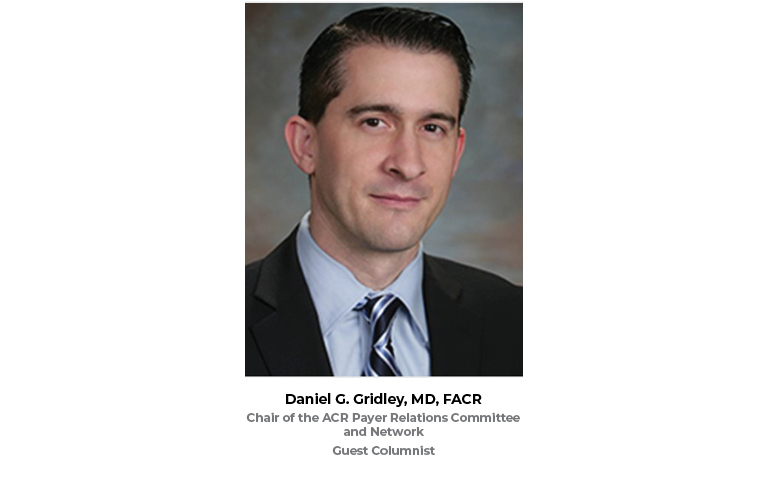Imaging service steerage occurs when payers intentionally direct patients to a medical imaging center based on their predetermined set of criteria, with cost savings as the primary focus.1 If successful, the payer saves money for their corporate entity, the patient, or both. Payers have a clear goal of increasing their bottom line. To improve profits, either revenue must increase (more insured patients paying premiums) or expenses must decrease (for example, decrease in payments to hospitals or healthcare professionals). The primary expense for healthcare insurance payers is medical services. Therefore, creative steerage strategies to decrease the physician expense component of their book of business will add to the bottom line of their corporate entity.
Imaging service steerage has been deployed for decades in many interesting ways. In recent years, site-of-service steerage has been the primary focus.2 Anthem was the first payer that utilized this tactic, followed shortly by United Healthcare (UHC), Cigna, and others. This form of steerage occurs when patients are either enticed or explicitly directed to certain lower-cost imaging sites, frequently with redirection from hospital-based facilities to stand-alone outpatient centers or independent diagnostic testing facilities.3 While payers publicize most of these site-of-service steerage initiatives as quality initiatives, it is clear in the majority of cases they are really leveraging quality as a cover for cost containment. For example, patients under certain payers have been directed away from high-performing cancer centers to small stand-alone outpatient imaging centers under the guise of quality, when cost containment is clearly the primary driver.
A new form of imaging service steerage was rolled out by UHC on July 1, 2022, under the Designated Diagnostic Provider (DDP) program for medical imaging. This new DDP program has both “quality” and “efficiency” components. Specifically, the program requires the medical imaging entity billing radiology services (based on tax identification number) to complete surveys regarding UHC-defined quality metrics to retain their current reimbursement level. Recently, the term “efficiency” for payers is a code word for decreasing reimbursement and cost containment. While some of the efficiency components are focused on turnaround times and availability of results for patients, there is frequently a cost component. For the new UHC DDP program, centers contracted at a certain UHC-determined percentage of Medicare reimbursement will face a change in its tier, leading to deceased reimbursement and steerage of the patients away from the lower-tier and non-DDP sites.
The last form of steerage discussed here is related to the No Surprises Act. Surprise billing is defined as receiving patient care with a subsequent unexpected bill issued to the patient. Congress stepped in and forged legislation to stop this issue. However, the U.S. Department of Health and Human Services (HHS) then worked primarily with the payers to determine benchmarks for the new legislation, which ultimately focused on benchmarking to the qualifying payment amount (QPA). The QPA is tied to an average reimbursement for the service rendered as determined by the insurance payer data, with marked potential for manipulation. Insurance companies could influence these numbers by contracting at markedly reduced reimbursement rates for radiology services with medical groups and specialists that have no radiologists/radiology services. These groups, having no interest in the reimbursement rates for services they do not provide, accept whatever rates the insurance companies propose. These lower reimbursement levels could then be leveraged by the insurance payers to artificially lower the QPA.
Once HHS agreed to these new benchmarks, some insurance payers then issued letters to healthcare systems and physician groups noting that if they refuse to re-contract at a lower reimbursement level, then the payer will no longer need to contract with them — and will simply enforce the new reduced reimbursement as determined by the No Surprises Act benchmarked to payments levels defined by the insurance payer QPA. This Trojan horse effort by payers to morph the No Surprises Act into wide-sweeping reimbursement reduction has the potential to result in lack of contracting and out-of-network status for multiple groups, thereby steering patients away from those entities. Fortunately, many groups, including the ACR, filed a lawsuit against the HHS determination of the legislation, and the algorithm for payment determination in the setting of a surprise bill is being reevaluated based on all the items in the legislation.

